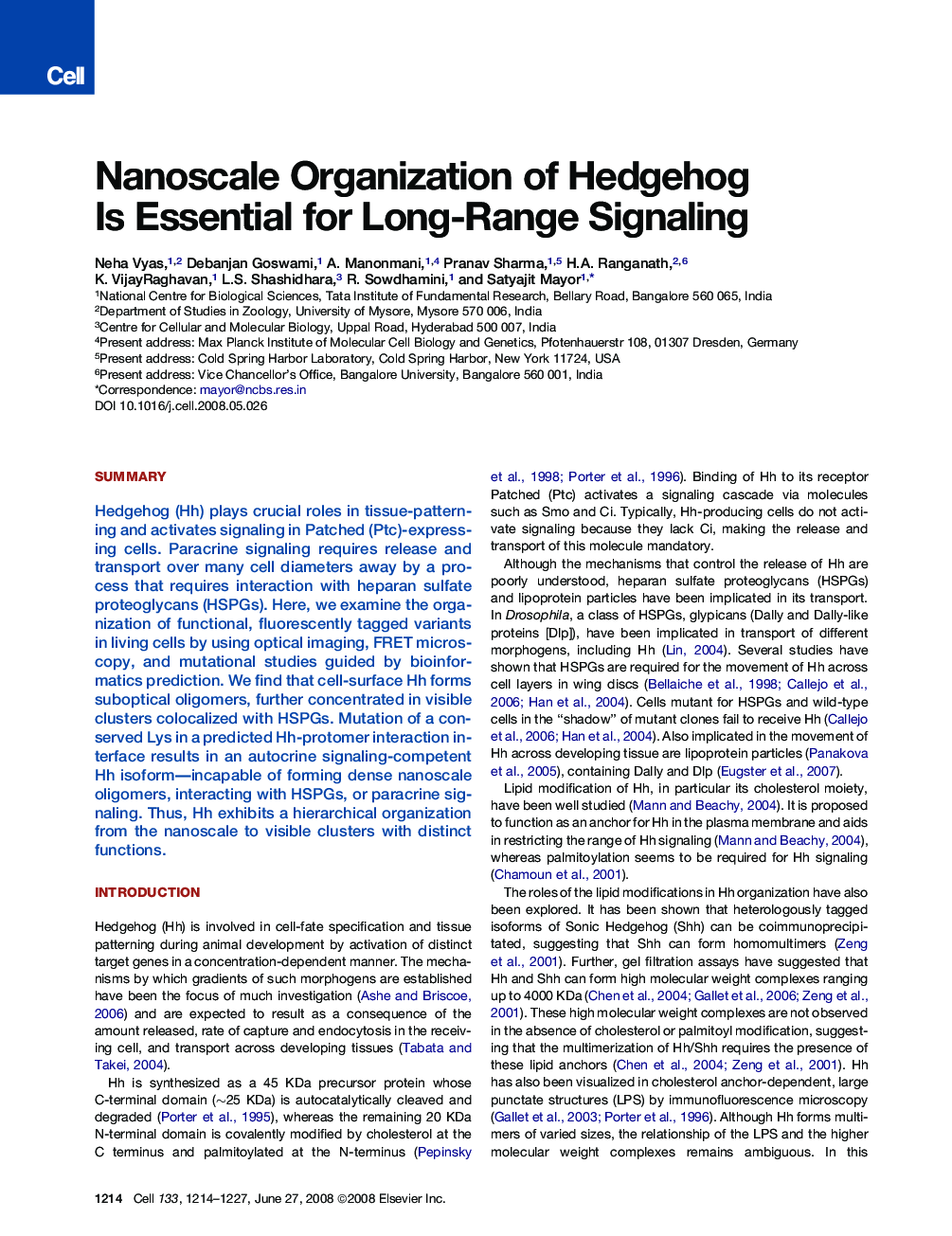| Article ID | Journal | Published Year | Pages | File Type |
|---|---|---|---|---|
| 2037351 | Cell | 2008 | 14 Pages |
SummaryHedgehog (Hh) plays crucial roles in tissue-patterning and activates signaling in Patched (Ptc)-expressing cells. Paracrine signaling requires release and transport over many cell diameters away by a process that requires interaction with heparan sulfate proteoglycans (HSPGs). Here, we examine the organization of functional, fluorescently tagged variants in living cells by using optical imaging, FRET microscopy, and mutational studies guided by bioinformatics prediction. We find that cell-surface Hh forms suboptical oligomers, further concentrated in visible clusters colocalized with HSPGs. Mutation of a conserved Lys in a predicted Hh-protomer interaction interface results in an autocrine signaling-competent Hh isoform—incapable of forming dense nanoscale oligomers, interacting with HSPGs, or paracrine signaling. Thus, Hh exhibits a hierarchical organization from the nanoscale to visible clusters with distinct functions.
